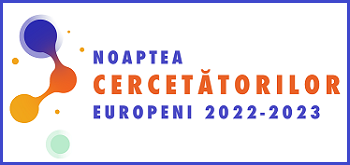| Conţinutul numărului revistei |
| Articolul precedent |
| Articolul urmator |
 |
 211 211 2 2 |
| Ultima descărcare din IBN: 2024-02-15 23:36 |
| Căutarea după subiecte similare conform CZU |
| 614.2(1-77) (1) |
| Organizarea publică şi profesională a sănătăţii (880) |
 SM ISO690:2012 SM ISO690:2012FERDOHLEB, Alina, IACONI, Oana-Simina, GALBEN, Lucia. The public health problem and resistant bacteria in low- and middle-income countries. In: One Health and Risk Management, 2023, nr. 2(S_Rez), supl. nr. 1, p. 18. ISSN 2587-3458. |
| EXPORT metadate: Google Scholar Crossref CERIF DataCite Dublin Core |
| One Health and Risk Management | |||||||
| Supliment nr. 1 Numărul 2(S_Rez) / 2023 / ISSN 2587-3458 /ISSNe 2587-3466 | |||||||
|
|||||||
| CZU: 614.2(1-77) | |||||||
| Pag. 18-18 | |||||||
|
|||||||
| Rezumat | |||||||
Introduction. Antimicrobial resistance has been recognized as a significant public health concern, continually evolving due to the escalating consumption of antibiotics. The extensive use of antibiotics for human, plant, and animal diseases has resulted in the widespread circulation of antimicrobial agents in nature, particularly in water. This issue is particularly pronounced in Low- and MiddleIncome Countries (LMIC), where it contributes to additional treatment expenses, increased morbidity and mortality, and where efforts to control Antimicrobial Resistance (AMR) in the environment are still in developmental stages. To combat antimicrobial-resistant bacteria (ARB) in the environment, specific bacteriophages have emerged as a potential solution. Current efforts are underway to utilize phages for water treatment, exemplified by the Phageland project. Aim. Identification and characterization of possible targets for phages in bacteria circulating in the environment. Material and methods. Biological materials from inpatients served as the source for bacterial strains in this study. Pathogens were identified using the VITEK 2 Compact automated method and culture. The resistance profile for each specimen was determined using the Vitek 2 Compact system. Subsequently, the presence of resistance mechanisms was determined through phenotypic testing, including a double diffusion test, combo test, and the AmpC detection kit for ESBL detection. Colorimetric tests and immunochromatographic rapid tests were also employed for carbapenemases' detection. Bacterial strains that were identified to genus and species levels, exhibited multidrug resistance to antimicrobials, and were suspected of having resistance mechanisms were included in the study. In the final phase, 31 bacterial strains were selected for further analysis. Results. K. pneumoniae was identified in 45.0% of cases, P. aeruginosa in 24.0%, followed by Acinetobacter spp. at 14.0% and S. aureus at 10.0%. E. coli was identified in 4.0% of isolates, and Enterococcus spp. in 3.0% of selected isolates. The susceptibility profile was interpreted according to the EUCAST standard. The resistance profile of the isolates showed the following: 8 (61.5%) of K. pneumoniae isolates were fully resistant, and 3 (23.1%) K. pneumoniae strains were susceptible only to Carbapenems. Three isolates of E. coli had distinct susceptibility patterns to agents of each class, as for P. aeruginosa – 5 out of 7 isolates (71.4%) were totally resistant to antimicrobials and only one isolate was sensible to Aminoglycosides. The resistance profiles for Acinetobacter spp. showed that 3 (75.0%) of the isolates are not susceptible to any classes of antibiotics. The susceptibility profile of S. aureus strains showed that all the isolates were susceptible to Glycopeptides and Oxazolidinone, while 75.0% were resistant to Cephalosporins and Fluoroquinolones. Enterococcus spp. isolates were resistant to all antimicrobials. Conclusions. Antimicrobial resistance is a concerning phenomenon that demands serious attention. Effectively addressing this issue starts with understanding the pathogenic agents circulating in the environment. This study serves as a foundational step for future research, which aims to identify suitable bacteriophages for water treatment in LMIC. The ultimate goal is to mitigate the economic and social burden on the country and address environmental contamination. |
|||||||
| Cuvinte-cheie antimicrobial resistance, Bacteria, LMIC, susceptibility testing, bacteriophages, water treatment |
|||||||
|













